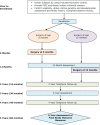Global oral health inequalities: challenges in the prevention and management of orofacial clefts and potential solutions
- PMID: 21490237
- PMCID: PMC6699117
- DOI: 10.1177/0022034511402083
Global oral health inequalities: challenges in the prevention and management of orofacial clefts and potential solutions
Abstract
The birth prevalence of orofacial clefts, one of the most common congenital anomalies, is approximately one in 700 live births, but varies with geography, ethnicity, and socio-economic status. There is a variation in infant mortality and access to care both between and within countries, so some clefts remain unrepaired into adulthood. Quality of care also varies, and even among repaired clefts there is residual deformity and morbidity that significantly affects some children. The two major issues in attempts to address these inequalities are (a) etiology/possibilities for prevention and (b) management and quality of care. For prevention, collaborative research efforts are required in developing countries, in line with the WHO approach to implement the recommendations of the 2008 Millennium Development Goals (www.un.org/millenniumgoals). This includes the "common risk factor" approach, which analyzes biological and social determinants of health alongside other chronic health problems such as diabetes and obesity, as outlined in the Marmot Health inequalities review (2008) (www.ucl.ac.uk/gheg/marmotreview). Simultaneously, orofacial cleft research should involve clinical researchers to identify inequalities in access to treatment and identify the best interventions for minimizing mortality and residual deformity. The future research agenda also requires engagement with implementation science to get research findings into practice.
Figures




Similar articles
-
Prevention of orofacial clefts caused by smoking: implications of the Surgeon General's report.Birth Defects Res A Clin Mol Teratol. 2014 Nov;100(11):822-5. doi: 10.1002/bdra.23274. Epub 2014 Jul 8. Birth Defects Res A Clin Mol Teratol. 2014. PMID: 25045059 Free PMC article.
-
Epidemiology of orofacial clefts in a Danish county over 35 years - Before and after implementation of a prenatal screening programme for congenital anomalies.Eur J Med Genet. 2018 Sep;61(9):489-492. doi: 10.1016/j.ejmg.2018.05.016. Eur J Med Genet. 2018. PMID: 29753919
-
Orofacial clefts in Czechoslovakia. Incidence, genetics and prevention of cleft lip and palate over a 19-year period.Scand J Plast Reconstr Surg Hand Surg. 1987;21(1):19-25. doi: 10.3109/02844318709083574. Scand J Plast Reconstr Surg Hand Surg. 1987. PMID: 3296142
-
Nutrition and genes in the development of orofacial clefting.Nutr Rev. 2006 Jun;64(6):280-8. doi: 10.1111/j.1753-4887.2006.tb00211.x. Nutr Rev. 2006. PMID: 16808114 Review.
-
The spectrum of orofacial clefting.Plast Reconstr Surg. 2005 Jun;115(7):101e-114e. doi: 10.1097/01.prs.0000164494.45986.91. Plast Reconstr Surg. 2005. PMID: 15923821 Review.
Cited by
-
Maternal underweight and obesity and risk of orofacial clefts in a large international consortium of population-based studies.Int J Epidemiol. 2017 Feb 1;46(1):190-199. doi: 10.1093/ije/dyw035. Int J Epidemiol. 2017. PMID: 27215617 Free PMC article.
-
The perioral muscle continuum affects premaxillary development in Wistar rats.Am J Transl Res. 2021 Nov 15;13(11):12364-12374. eCollection 2021. Am J Transl Res. 2021. PMID: 34956458 Free PMC article.
-
Molecular investigation in individuals with orofacial clefts and microphthalmia-anophthalmia-coloboma spectrum.Eur J Hum Genet. 2024 Oct;32(10):1257-1266. doi: 10.1038/s41431-023-01488-5. Epub 2023 Nov 6. Eur J Hum Genet. 2024. PMID: 37932364
-
Maternal Risk Factors Associated with the Development of Cleft Lip and Cleft Palate in Mexico: A Case-Control Study.Iran J Otorhinolaryngol. 2017 Jul;29(93):189-195. Iran J Otorhinolaryngol. 2017. PMID: 28819616 Free PMC article.
-
Global, regional, and national caries of permanent teeth incidence, prevalence, and disability-adjusted life years, 1990-2021: analysis for the global burden of disease study.BMC Oral Health. 2025 May 13;25(1):715. doi: 10.1186/s12903-025-06086-z. BMC Oral Health. 2025. PMID: 40361035 Free PMC article.
References
-
- Badovinac RL, Werler MM, Williams PL, Kelsey KT, Hayes C. (2007). Folic acid-containing supplement consumption during pregnancy and risk for oral clefts: a meta-analysis. Birth Defects Res A Clin Mol Teratol 79:8-15. - PubMed
-
- Bamji MS, Sarma KV, Radhaiah G. (1979). Relationship between biochemical and clinical indices of B-vitamin deficiency. A study in rural school boys. Br J Nutr 41:431-441. - PubMed
-
- Bearn D, Mildinhall S, Murphy T, Murray JJ, Sell D, Shaw WC, et al. (2001). Cleft lip and palate care in the United Kingdom – The Clinical Standards Advisory Group (CSAG) Study. Part 4: Outcome comparisons, training, and conclusions. Cleft Palate Craniofac J 38:38-43. - PubMed
-
- Beaty TH, Wang H, Hetmanski JB, Fan YT, Zeiger JS, Liang KY, et al. (2001). A case-control study of nonsyndromic oral clefts in Maryland. Ann Epidemiol 11:434-42. - PubMed
MeSH terms
Grants and funding
LinkOut - more resources
Full Text Sources
Medical

